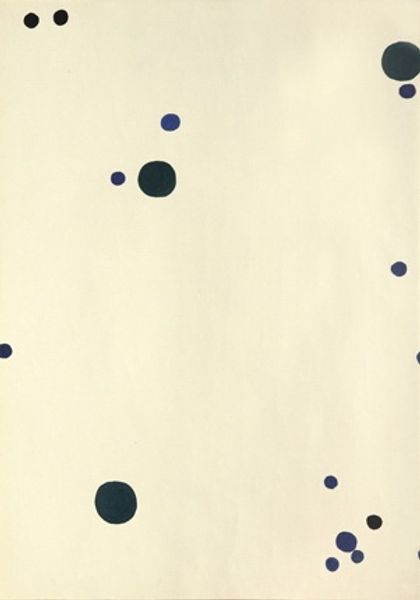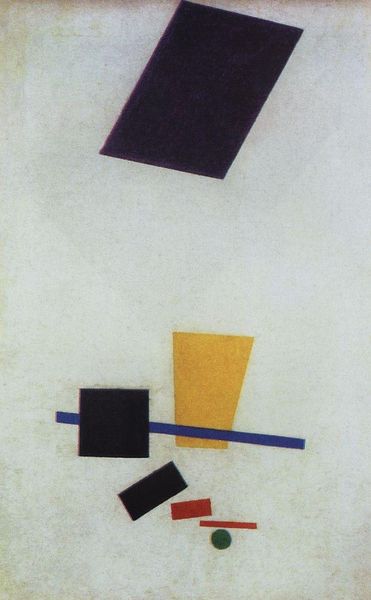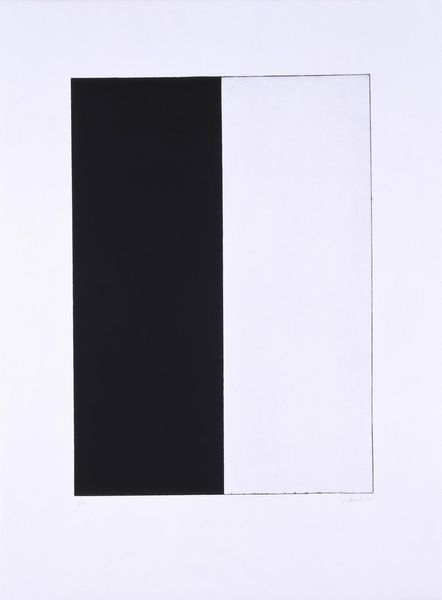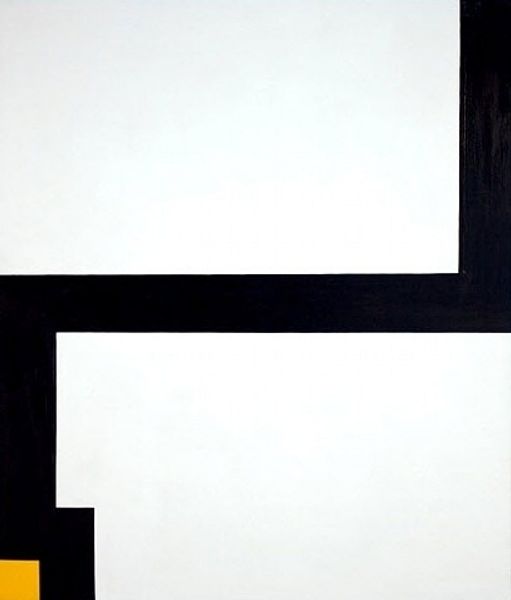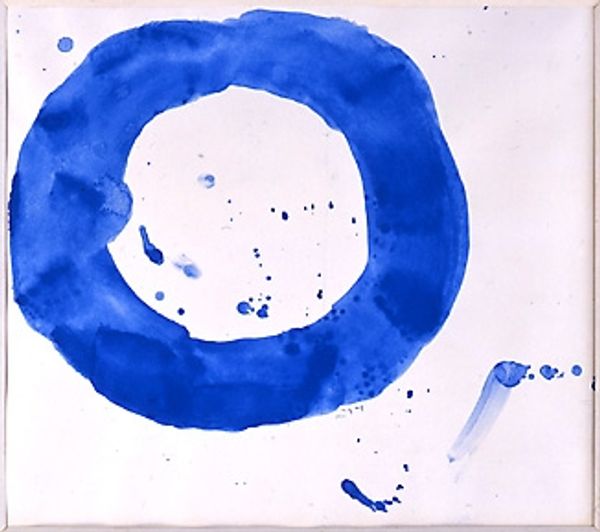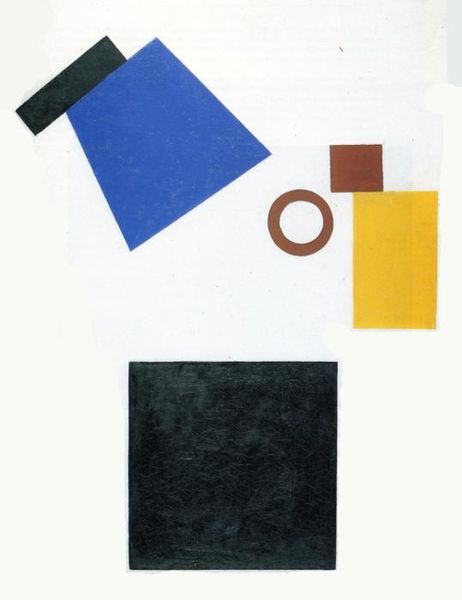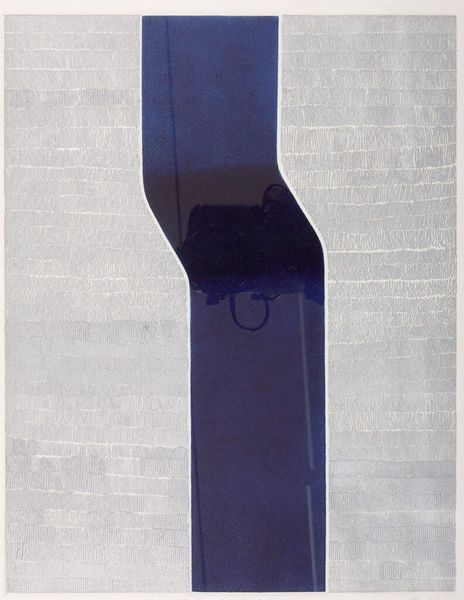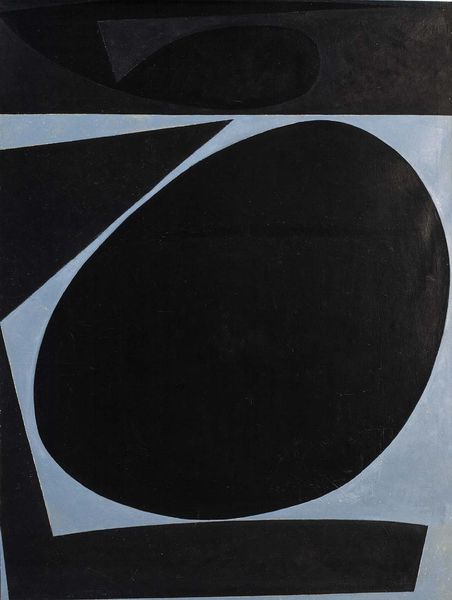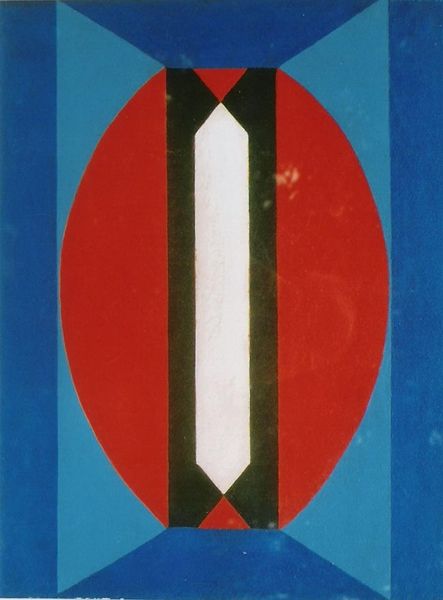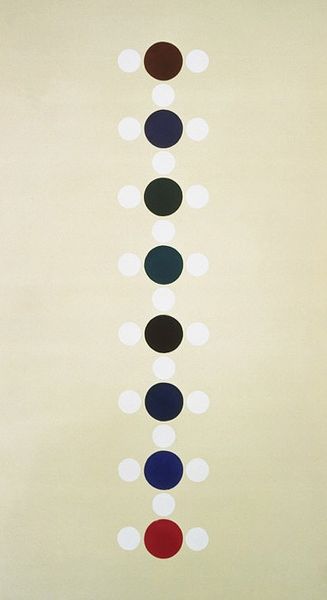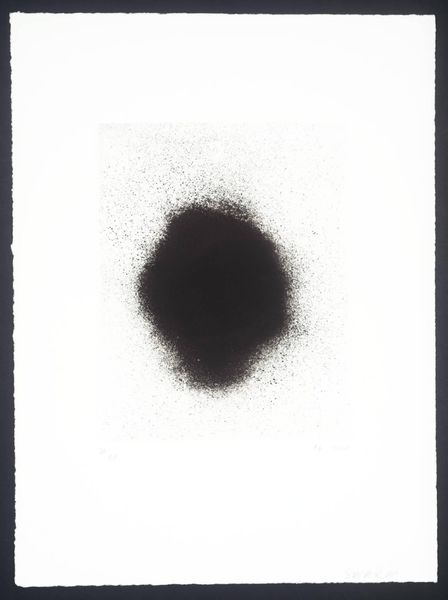
Copyright: Public domain
Curator: This painting by Kazimir Malevich, entitled "Quadrilateral and the Circle," dates back to 1915, an important period in his development of Suprematism. Editor: It strikes me as deceptively simple. The cool detachment almost makes it unsettling—two basic shapes floating in an undefined space, what do they signify to you? Curator: For Malevich, these shapes weren't just decorations. This piece represents his movement toward complete abstraction. In the context of early 20th-century Russia, it reflects a turn away from representational art toward what he called 'the supremacy of pure feeling' in creative art. It can be regarded as his search for new visual vocabularies that could reflect and stimulate social change. Editor: The circle and the square...aren't they pretty primal symbols in many cultures? The circle representing unity, completion, even the divine. And the square or rectangle often signifying structure, the earth, something grounded. Here, set against that open white void, the symbolic weight seems…amplified. Is it about deconstructing or perhaps redefining what these symbols meant, through pure geometric expression? Curator: Yes, in dismantling the tradition Malevich was rebuilding another—perhaps a visual representation of socialist utopia. Looking through a lens of power, who had the access to, or even understanding of, previous artistic representations? He also might consider the spiritual ramifications of removing all earthly symbols from art; to replace all figuration with shapes in and of themselves becomes a statement that form has the capacity to convey emotion or meaning. Editor: Even now, those forms resonate strongly. Looking at it, I get the feeling that maybe he intended it as a modern form of iconography...perhaps, rather than the representation of known divinity, he presented simple shapes and colours and created new, abstract gods. Curator: That’s an insightful observation. I've always regarded Malevich's pursuit of geometric forms as not just artistic exploration but a cultural challenge in times of political and social revolution. The simplification, for some, felt deeply political. Editor: Seeing it this way really deepens its impact, thank you. Curator: Likewise! It highlights how art, even at its most minimal, still holds complexities linked to the world.
Comments
No comments
Be the first to comment and join the conversation on the ultimate creative platform.

